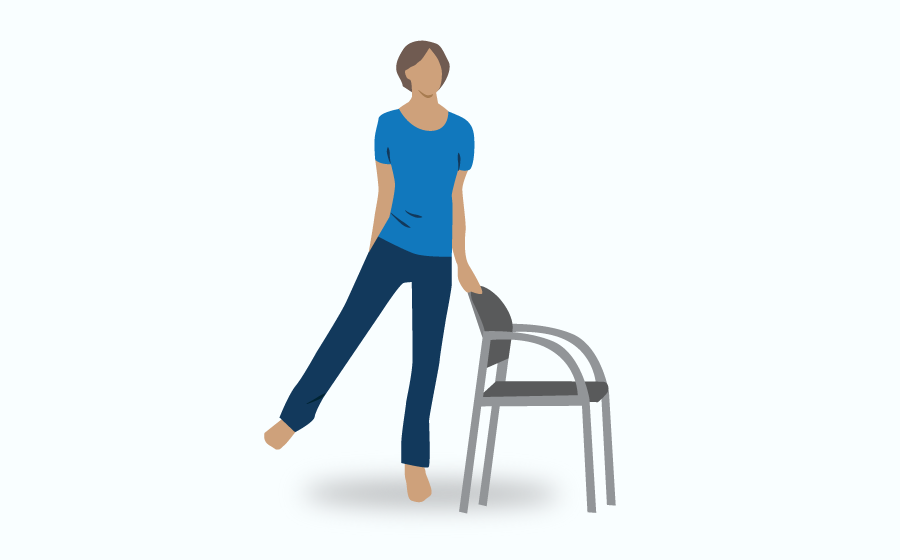Exercising your hip and leg muscles after surgery is vitally important for recovery. Breathing exercises will also help.
Exercises aim to help you quickly regain movement in your hip following surgery, prevent muscle loss, rebuild muscle strength and prevent stiffness of your new hip joint.
The Therapy team will guide you on which exercises to do, when to start them and how often to do them.
The following exercises can be done while standing.
Partial squat
Important
The following exercise must only be completed following guidance from a physiotherapist.
| Frequency | At least three times a day |
|---|---|
| Repetitions | 10 |

1.
In a standing position, hold on to or lean on a stable surface such as a kitchen counter or the back of a firm chair.

2.
While keeping your back straight and your hips above the level of your knees, slowly lower your body into a semi-squat position. Don't lean forward, and keep your heels in contact with the ground at all times.
Standing weight transfer
Important
The following exercise must only be completed following guidance from a physiotherapist.
| Frequency | Four times a day |
|---|---|
| Repetitions | 10 |

1.
In a standing position, hold on to or lean on a stable surface such as a kitchen counter or the back of a firm chair.

2.
Transfer your weight from one leg to the other.
Standing hip flexion
Important
The following exercise must only be completed following guidance from a physiotherapist.
| Frequency | Four times a day |
|---|---|
| Repetitions | 10 |

1.
In a standing position, hold on to or lean on a stable surface such as a kitchen counter or the back of a firm chair.

2.
Lift your operated leg up in front of you, bending your knee as far as pain allows, aiming for 90 degrees. Hold for five seconds, then lower back down.
Standing hip extension
Important
The following exercise must only be completed following guidance from a physiotherapist.
| Frequency | Four times a day |
|---|---|
| Repetitions | 10 |

1.
In a standing position, hold on to or lean on a stable surface such as a kitchen counter or the back of a firm chair.

2.
Lift your leg (the operated leg) back behind you, keeping your knee straight. Hold for five seconds, then lower back down. Keep your back straight throughout the exercise. Do not lean forward.
Standing hip abduction
Important
The following exercise must only be completed following guidance from a physiotherapist.
| Frequency | Four times a day |
|---|---|
| Repetitions | 10 |

1.
In a standing position, standing side on, hold on to or lean on a stable surface such as a kitchen counter or the back of a firm chair.
2.
Slowly raise your leg (the operated leg) out to the side, keeping your upper body still. Hold for five seconds, then lower back down.
Heel raises
Important
The following exercise must only be completed following guidance from a physiotherapist.
| Frequency | Three times a day |
|---|---|
| Repetitions | 10 |

1.
In a standing position, hold on to or lean on a stable surface such as a kitchen counter or the back of a firm chair.

2.
Push up onto your toes on both legs, raising your heels off the ground. Keep your knees straight. Hold for five seconds, then lower back down.
Last reviewed: 02 March 2023